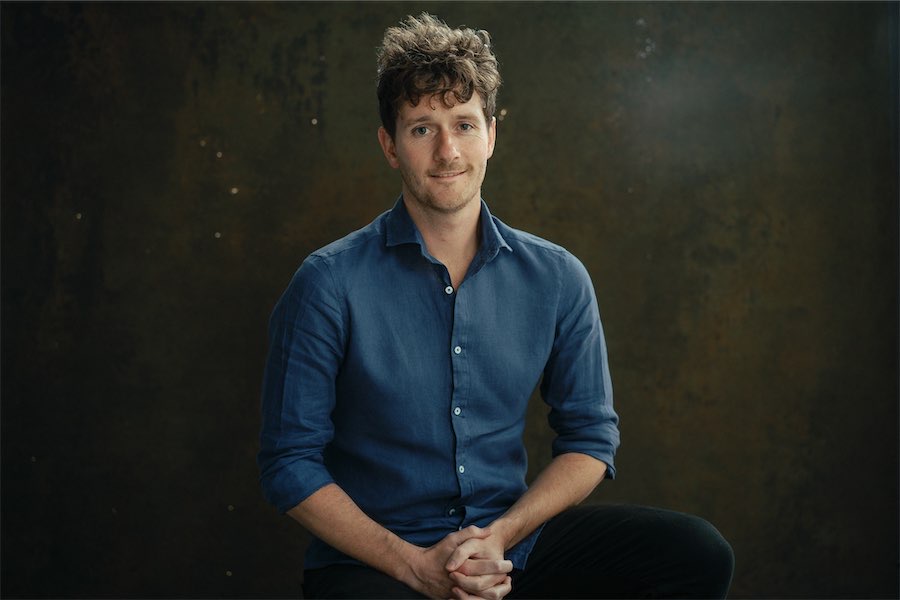
THE EXPRESSIONIST painter Michael Taylor may be overlooked as a local artist, even though he has worked in the Canberra region for decades.
Taylor is, however, well known as an Australian expressionist painter and has a long standing practice and this retrospective, the first major survey of his work, shows the development of this artist over a fifty year period.
Originally from Sydney, Taylor has been particularly inspired by landscape and the paintings in this exhibition draw the viewer into the energy of his expressionistic style as well as the spirit of the landscapes. The paintings are large, and a definite palette emerges seeing Taylor’s works together, grouped by different periods.
Travelling in the 50s and 60s, he gained inspiration from visits to India and Europe. A largely black and white palette characterises the 60s. These paintings, some of which, including ‘Mother and Son’ 1963, were shown in Taylor’s first ever exhibition, are displayed on the left as one enters the gallery. An ochre base is overcome by a swirling energy of black and white. The strokes of a large brush have been swept through, taking any still-wet paint with it. The painting is finished with drips and spills on top, thinned with enamel.

In a mindful departure from the energetic drippings and brush strokes, here and there on top of the predominantly grey palette may be found a thin, carefully painted red line, or a perfect red circle. As in ‘River’ 1966, the effect is a kind of technical delicacy, like a map superimposed on the messiness of a real landscape.
Taylor began living in Canberra in the 1970s and drew influence from local artists and artworks, including Jackson Pollock’s ‘Blue Poles’. From this time Taylor’s palette shifts to colour, introducing more bright, almost fluorescent colours. A palette knife, allowing thickly applied layers of paint, is in frequent use.

Also in the 70s Taylor more obviously applies his method to representation. ‘The Swimmers’ 1977 implies the busyness of a beach scene. Thick paint applied horizontally with a palette knife indicates whirls, eddies and waves. The heavy impasto lines move from left to right, so that surf and swimmers alike come to rest on the hardness of the sand.
Taylor spent time painting landscapes around Australia in the late 70s and early 80s, travelling to Adelaide Hills and areas around Sydney. His practice continues to be inspired by landscape and its essential spirit. In its simplicity ‘Hour Before Night’ 1980 could be mistaken for a photograph if looked at from a distance.
A preoccupation with the representation of water continues in the 1990s with ‘Flash Flood’ 1997. The messiness of a deluge is captured in swirling greens and dark patches, as if of rubbish caught in the swell.
The latest works experiment with collage, such as ‘Musical Hill’ 2003, which, in addition to his staple of oil and enamel, includes plastic musical notes and shapes of cut canvas.
This exhibition makes known the chapters in Taylor’s work over the years. Beginning with an engagement with expressionism in the 60s, Taylor’s 70s preempts the hypercolour t-shirts of the 80s with its shifting luminescence. More representative landscapes and thick impasto painting mark the 80s and 90s, flowing into his recent introduction of collage.
Canberrans should familiarise or refamiliarise themselves with this important local painter, his obvious commitment to exploration of painting and his artistic energy.
Melissa Nickols is the 2016 M16 Artspace writer in residence.
Who can be trusted?
In a world of spin and confusion, there’s never been a more important time to support independent journalism in Canberra.
If you trust our work online and want to enforce the power of independent voices, I invite you to make a small contribution.
Every dollar of support is invested back into our journalism to help keep citynews.com.au strong and free.
Thank you,
Ian Meikle, editor




Leave a Reply